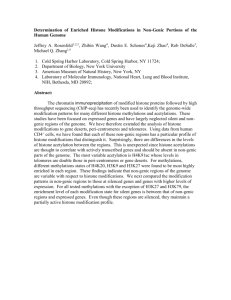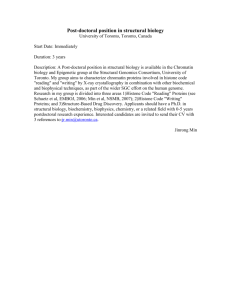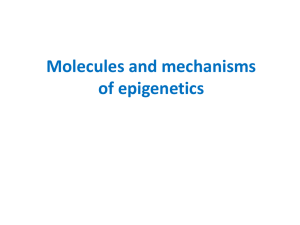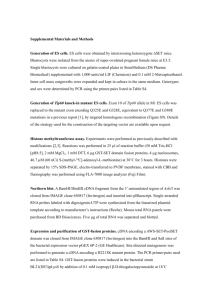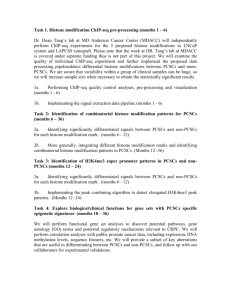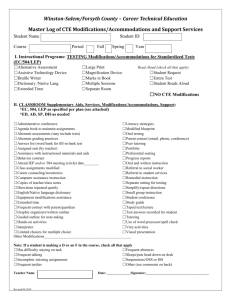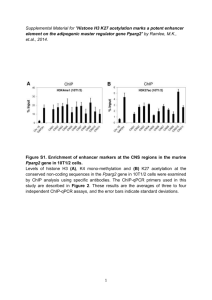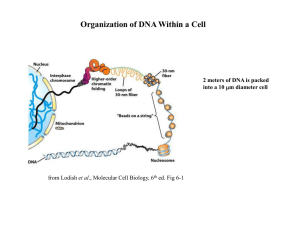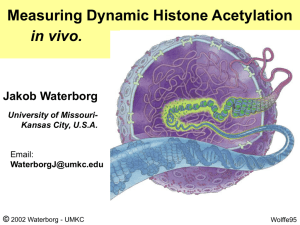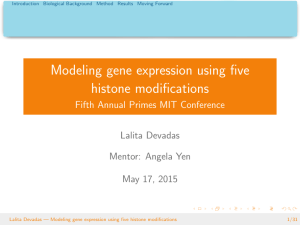Abstract
advertisement
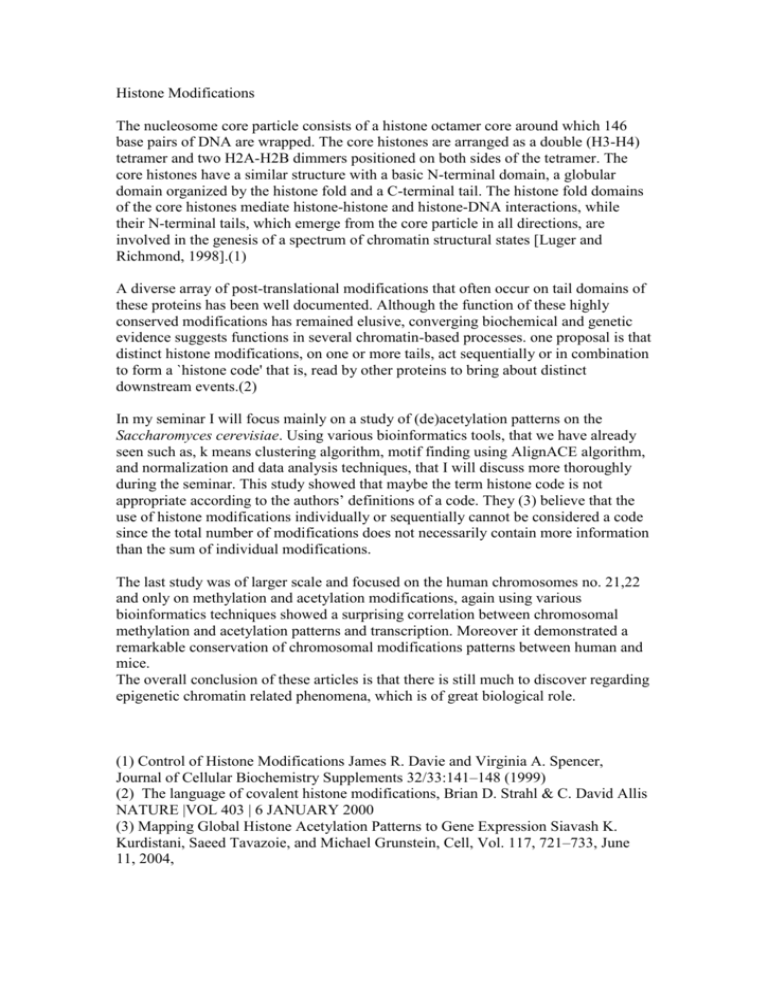
Histone Modifications The nucleosome core particle consists of a histone octamer core around which 146 base pairs of DNA are wrapped. The core histones are arranged as a double (H3-H4) tetramer and two H2A-H2B dimmers positioned on both sides of the tetramer. The core histones have a similar structure with a basic N-terminal domain, a globular domain organized by the histone fold and a C-terminal tail. The histone fold domains of the core histones mediate histone-histone and histone-DNA interactions, while their N-terminal tails, which emerge from the core particle in all directions, are involved in the genesis of a spectrum of chromatin structural states [Luger and Richmond, 1998].(1) A diverse array of post-translational modifications that often occur on tail domains of these proteins has been well documented. Although the function of these highly conserved modifications has remained elusive, converging biochemical and genetic evidence suggests functions in several chromatin-based processes. one proposal is that distinct histone modifications, on one or more tails, act sequentially or in combination to form a `histone code' that is, read by other proteins to bring about distinct downstream events.(2) In my seminar I will focus mainly on a study of (de)acetylation patterns on the Saccharomyces cerevisiae. Using various bioinformatics tools, that we have already seen such as, k means clustering algorithm, motif finding using AlignACE algorithm, and normalization and data analysis techniques, that I will discuss more thoroughly during the seminar. This study showed that maybe the term histone code is not appropriate according to the authors’ definitions of a code. They (3) believe that the use of histone modifications individually or sequentially cannot be considered a code since the total number of modifications does not necessarily contain more information than the sum of individual modifications. The last study was of larger scale and focused on the human chromosomes no. 21,22 and only on methylation and acetylation modifications, again using various bioinformatics techniques showed a surprising correlation between chromosomal methylation and acetylation patterns and transcription. Moreover it demonstrated a remarkable conservation of chromosomal modifications patterns between human and mice. The overall conclusion of these articles is that there is still much to discover regarding epigenetic chromatin related phenomena, which is of great biological role. (1) Control of Histone Modifications James R. Davie and Virginia A. Spencer, Journal of Cellular Biochemistry Supplements 32/33:141–148 (1999) (2) The language of covalent histone modifications, Brian D. Strahl & C. David Allis NATURE |VOL 403 | 6 JANUARY 2000 (3) Mapping Global Histone Acetylation Patterns to Gene Expression Siavash K. Kurdistani, Saeed Tavazoie, and Michael Grunstein, Cell, Vol. 117, 721–733, June 11, 2004,
